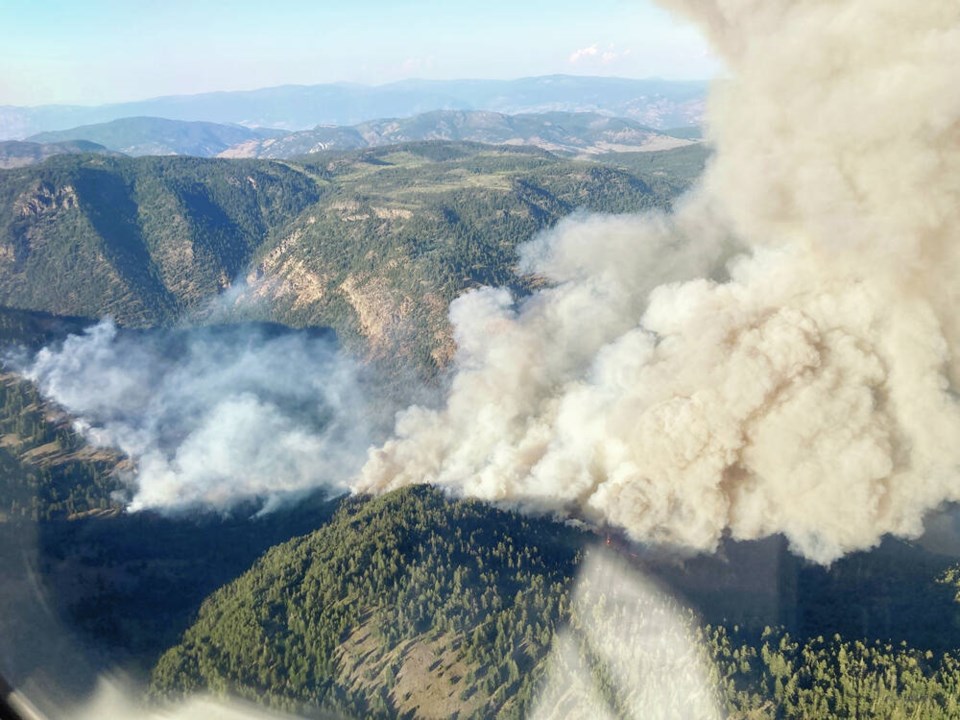Extreme heat, forest fires, massive floods and mudslides. In this past year, British Columbia’s cities, towns and critical infrastructure have suffered devastating and long-lasting impacts as a result of our changing climate. Communities were cut off from essential food and supplies due to washed-out highways and rail lines. Families watched their homes burn or get swept away. Hundreds of people lost their lives.
Municipal climate action policy is going to be a critical issue in saąúĽĘ´«Ă˝’s municipal elections this fall. Local governments have influence over at least 50 per cent of emissions in saąúĽĘ´«Ă˝. This is because where people live, what kind of buildings they live in and how they get around are the jurisdiction of local governments.
Candidates need to show voters their visions for a climate-resilient future. And, in order to make informed decisions this fall, voters need the province to clarify what powers municipalities actually have to carry out CleanBC commitments.
Current local governments are handing ambitious, sophisticated climate plans to the mayors and councilors elected this fall. The new councils will be responsible for taking action.
Local governments already have a variety of tools — from energy efficiency standards built into building codes, to land use policies that enable cities to be walkable and have good transit — but there are still a few missing from local government toolkits that only the province can supply.
Last summer in saąúĽĘ´«Ă˝, 619 people died of heat-related deaths in eight days. Heat related deaths are preventable. Most of these fatalities happened in the supposed safety of people’s homes. saąúĽĘ´«Ă˝’s report to the chief coroner on last year’s heat dome specifically recognized retrofits and the addition of active cooling as necessary to protect residents from heat waves and other impacts of extreme weather.
But heat pumps and other deep retrofits that improve the safety and resilience of homes have high up-front costs. Without good options for financing and funding, they are out of reach for those most affected by the effects of extreme weather: low-income, elderly and vulnerable communities.
Emissions from existing buildings currently make up on average 45 per cent of emissions in villages, towns and cities, mostly generated by homes and buildings. The province identified property assessed clean energy (PACE) programs, also known as home energy loan programs, in its CleanBC plan as a key tool for meeting net-zero goals for buildings.
PACE programs allow local governments to lend money for retrofits to property owners, who then pay back the loan over time with the money generated by the savings from their energy bills, eliminating the up-front cost.
PACE programs have been successfully implemented in other Canadian jurisdictions. Yet, despite calls from over 30 local governments — large and small — from Kitimat to Vancouver, to prioritize the rollout of this program, saąúĽĘ´«Ă˝ has yet to deliver on this key commitment.
While saąúĽĘ´«Ă˝ is often the leader when it comes to net-zero climate policies, it is falling further behind other provinces in this very important area. Provinces across the country have provided local governments with the authority and the funding to implement PACE programs.
This kind of provincial support allowed both Edmonton and Rocky Mountain House to implement PACE pilot programs in Alberta. Toronto and Halifax have had pilot programs for some time. Saskatoon is already reviewing the learnings from their pilot program. Atlantic saąúĽĘ´«Ă˝’s program already has five cities and more than 1,200 registered participants in its first year.
All these pilots have had robust uptake; rapidly becoming fully subscribed — some within a matter of days.
The saąúĽĘ´«Ă˝ government needs to empower municipalities to address the climate crisis by giving them the tools they need to create local climate action policies and to scale up action at the pace needed to meet the urgency climate change demands.
PACE programs are a significant tool in the municipal climate action toolbox because they give local governments stable, long-term funding options for all property owners, not temporary and limited incentives.
Other tools local governments need include the authority to provide incentives to local businesses to encourage changes to reduce emissions and adapt to climate change, and the authority to regulate carbon emissions from existing building heating systems.
While the province won’t have all these ready in time for the fall municipal election, they can start by putting PACE legislation in place during the fall sitting of the legislature.
The climate emergency is one of the most urgent issues the province and the country faces. PACE legislation will give candidates running on climate action platforms the ability to show voters that as locally elected officials, that they have the tools in their toolboxes to take meaningful climate action.
With the election and the next extreme weather event just around the corner, the province cannot act soon enough.



